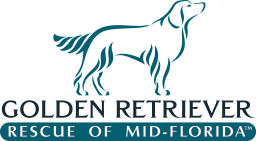Communicating with your dog is a two-way street.
While you’re teaching her to understand and accept primate language, you can also learn and use canine body language. This will greatly enhance your relationship and your training program, since your dog can respond very quickly when she realizes you are speaking Dog. It’s also a useful  skill to have for when you’re meeting or interacting with a strange dog.
skill to have for when you’re meeting or interacting with a strange dog.
The following tips on human’s body language are applicable when interacting with any dog, but are especially important when dealing with a fearful dog, or any dog who appears worried or unsure about an interaction. Adopt mannerisms and teach others who interact with your dog to do so as well.
1. Let the dog come to you. If a dog is frightened, she must be allowed to decide whether or not to approach. It’s never a good idea to restrain a dog and force her to accept contact from others. Remember the “fight or flight” response; if the opportunity for flight is taken away, a dog’s choices are limited.
2. Turn to the Side. Facing a dog directly is more confrontational than keeping your body turned partially or completely to the side; even turning your head to the side will make a frightened or worried dog feel less anxious.
3. No staring, please! A direct stare is a threat in the animal kingdom. It is perfectly fine to look at a dog; just soften your expression and don’t hard stare directly into her eyes. Do not allow children to put their faces near your dog’s face or to stare into her eyes. Adults who insist on direct eye contact with strange dogs also tend to get bitten.
4. Don’t hover. Leaning over a dog can cause the dog to become afraid and possibly defensive. When we bend over dogs to pet them or to cuddle them, we are unwittingly offering a posture of threat and intimidation.
5. Pet appropriately. Approaching dogs by patting then on the head is ill-advised. Envision the interaction from the dog’s point of view; a palm approaching from above can be alarming. It’s not that dogs should never be petted on top of the head, but that head-patting (or petting over the dog’s shoulders, back, or rump) should not be used as an initial approach. It is wiser to make a fist, hold it under the dog’s nose is to allow her to sniff, then pet the dog on the chest, moving gradually to the sides of the face and other body parts, assuming the dog is comfortable. Likewise, a hand moving in quickly to grab for a dog’s collar is more potentially fear-inducing than a hand moving slowly to a dog’s chest, scratching it, then moving up to take hold of the collar.
6. Stoop, don’t swoop. Small dogs in particular are often swooped down upon when people want to pick them up. Fast, direct, overhead movements are much more frightening than slow, indirect ones. To lift a small dog, crouch down, pet the dog for a moment, then gently slip your hands under her belly and chest, and lift.
7. Watch your smile. While humans interpret a smile as friendly, a dog might not be as fond of seeing your pearly whites. A show of teeth is, after all, a threat in the animal kingdom. Smile at dogs with a closed mouth.
If you would like to learn more about reading and listening to your dog’s body language, purchase Whole Dog Journal’s ebook Dog to English Dictionary.
